#ilocano poetry
Explore tagged Tumblr posts
Text
Tinola
“Inka man digusen dagitoy manok baket!”inbaon tay lakay na.Ti met dardaras naa napan nagisaganakadagiti kasapulanna:sungrud ken silyasi,aklu ken sayote,bawang ken laya,tanglad ken paminta,patis ken mantika…

View On WordPress
0 notes
Note
as a fellow sea-diaspora and ilocano your poetry about the ancestors and the love and care of community helped me out of a infinitely tough time of my life. thank you for your wonderful works kapatid
I’m glad my work has helped :,). A lot of my family and family history has been lost due to drugs and crime and all the things associated with that kind of life and it’s been very hard in many ways to learn about my family and connect with the people I’ve found and the broader communities we’re apart of.
Ultimately though, when you reach out to others with love and a willingness to learn, they reach back with the same energy and that’s really saved me personally, and I hope it helps you. There’s an infinite kindness waiting in most people I’d say, even if they aren’t your direct family or are from a different world entirely.
Wishing all the luck and sweetness in the world for you kapatid 🥺💗
39 notes
·
View notes
Note
i was planning to use Star Slade for an oc but they deleted their instagram ... can i get some alts? she's in her mid 20s, would prefer that they're indigenous (indigenous + asian would be great but im open to anything) and have alternative / goth vibes! ty
The only Indigenous and Asian faceclaims I know if in/around that age range:
Chase Sui Wonders (1996) Tahitian, Chinese, Japanese / Unspecified White - her Generation resources could work!
Morgan Holmstrom (1997) Metis of Cree descent / Sambal Filipino, Ilocano Filipino.
Amber Midthunder (1997) Hunkpapa Lakota Sioux, Hudeshabina Nakoda Sioux, Sisseton Wahpeton Oyate Dakota Sioux, Norwegian / Thai-Chinese, English.
Ava Jules (2000) Kānaka Maoli, Filipino, Portuguese, Italian.
Stephanie Poetri (2000) Patawomeck, Irish, Scottish, English, French, German, Swiss, Dutch / Minahasan Indonesian, Batak Indonesian, Chinese.
Indigenous face claims that could work / have alt vibes:
Sky Ferreira (1992) Brazilian [Portuguese, possibly other] / Ashkenazi Jewish, Ojibwe, Cree, Chippewa Cree, Cheyenne, White - has Chronic Lyme Disease - has been in the industry for a while so has a bunch of younger roles/resources.
Kawennáhere Devery Jacobs (1993) Mohawk - is also queer - has a younger role in The Sun at Midnight.
Hannah Marks (1993) Muscogee, White / Ashkenazi Jewish, Sephardi Jewish - in Dirk Gently's Holistic Detective Agency.
Na'ku'set Gould (1995) Mi'kmaq, White - was around 21 at the end of Degrassi if I can math.
Coty Camacho (1995) Mexican [Mixtec and Zapotec] - is pansexual.
Tia Wood (1999) Plains Cree, St'at'imc, Whonnock.
Sivan Alyra Rose (1999) Afro Puerto Rican, Creole / Chiricahua Apache - is genderfluid (they/she).
Anna Lambe (2000) Inuit - is bisexual.
Paulina Alexis (2000) Nakoda Sioux.
Renata Flores (2001) Peruvian [Quechua].
Ava Raine (2001) Samoan, Black Nova Scotian.
Quannah Chasinghorse (2002) Hän, Gwich’in, Sicangu Oyate Lakota Sioux, Oglala Lakota Sioux.
Hope this helps!
11 notes
·
View notes
Text
Josie Rizal and her likes and dislikes (if she was been confirmed and has a huge role and major comeback in Tekken 8):
- she likes to eat healthy food and having a very lethargic diet (even she has an hourglass figure and being physically fit and sexy due to her being a eskrima practitioner)
- she was a fan of Aaliyah and Selena Quintallina and she would sometimes wore like them while attending Halloween parties.
- she was into math, science, essay and history but she’s being a straight-a student herself.
- Josie was also a Zendaya fan.
- Josie has a crybaby personality but Josie was been described by some people she met with as a “her smile, her kindness and her beauty was a ray of sunshine”.
- Josie loves to help with other people and being hospitable.
- Josie would decline the offer if she didn’t want to sing at a karaoke but she sang good.
- HBO’s Euphoria was her favorite tv show.. it is because of Zendaya, duh
- Josie tended to be shy, mysterious, wholesome, sweet but she was sometimes sarcastic.
- josie was a big fan of red lipstick but she prefers wearing orange lipstick.
- she speaks Tagalog; but she knew how to speak bicolano, ilocano, kapampangan hiligayon and cebuano (Josie was bisdak) but she spoke English, Japanese and Spanish too.
- a collector of canvas tote bags, clothes, shoes and keychains (especially books, magazines, makeups and also nail polishes).
- also a switftie herself.
- “in love with his red…”
- josie has a crush on Miguel Rojo and she was into hot Spanish bad boy (but a wholesome from the inside).
- josie loves eating sweet’s especially some Filipino sweet delicacies like halo-halo, mais con yelo, egg pie, buko pie, pastillas, espasol, ginataang mais/ginataang bilu-bilo and also haribo gummy bears, kit-kat, Goya, Hershey’s and some other international sweetened foods.
- Josie would get mad if someone’s trying to get her favorite Haribo Gummy Bears.
- Josie also listens to Utada Hikaru, R&B rap and hip-hop music and metal rock and soft rock music.
- an avid traveler and wanted to learn different kinds of languages and cultures (since she works as a supermodel outside of her country).
- Josie plans to get married at 25 and having two daughters of her own at 34.
- Josie’s Highschool course would be humanities.
- a fan of haikus and poetry.
- she was into gold made jewelries and white Pearls.
- Was born under a Virgo sign.
- She would get insecure and jealous sometimes.
- was good friends with Xiaoyu, Alisa, Asuka, Lili, Kuma and Panda.
- Josie would yell, saying a roasting reply at someone else who’s being racist towards Filipinos (since she hates racist people.)
A white racist karen : “that is why I don’t hire Filipinos.”
Josie Rizal herself : “Oh okay Karen, lemme ruin your entire life perspectives about the Filipinos and why they left their own motherland and worked abroad!”
- was a victim of school bullying since childhood (due to her tall and shy nature she was until her parents convinced her to learn kickboxing so she could defend herself from bullies).
- if she saw a good stuff (ex. a new iphone or a new pair of silettos), she would earn some money and buy it.
- Josie works mutiple jobs wc includes a seamstress, a substitute tutor, a cashier, call center agent and also a domestic helper.
- she would rather come home from work for not being drunk and having a daily dose of happy-happy time with friends but instead; she would go home, having a nice bath, eat some snacks and watch some tv shows from an online streaming app than going for a midnight drinking sess.
- she didn’t like Filipino parents using their kids as their own “retirement fund” but Josie was lucky to have parents who weren’t like that and they supported her.
- Josie would send some money via online bank remittance to her parents that she would rather surprise them with gifts.
- both a cat and dog person herself.
- a weeb herself.
#josie rizal#filipino#tekken7#headcannon#zendaya#aaliyah#selena quintanilla perez#likesanddislikes#Utada Hikaru#miguel caballero rojo#spanish
2 notes
·
View notes
Text
Here are 10 uncommon Ilocano words along with their meanings and sample sentences:
Alukuy (dizziness or lightheadedness)
Example: "Nakaikkanak ti alukuy kalpasan ti panagpungtotko."
(I felt dizzy after getting angry.)
Panglakayen (wisdom from age and experience)
Example: "Ti panglakayen dagiti ammayo ket makatulong kadakayo amin."
(The wisdom of your elders can help all of you.)
Awagas (pure, untainted, genuine)
Example: "Ti ayatna ket awagas ken awan pagpilpilaan."
(His love is pure and unconditional.)
Talged (stability, security, assurance)
Example: "Kasapulan ti talged tapno sumaya-at ti panagbiag."
(Stability is needed for a better life.)
Daya (honor, pride, dignity)
Example: "Saanmo a baybay-an ti daya ti pamilia yo."
(Do not tarnish your family’s honor.)
Luktan (to open something suddenly)
Example: "Nalukutan ti rida gapu ta napigsa ti angot ti angin."
(The window suddenly opened because of the strong wind.)
Dugui (flow, often referring to liquid like blood or water)
Example: "Nakitak ti dugui ti karayan gapu ti napigsa a tudo."
(I saw the river’s strong flow because of the heavy rain.)
Daniw (poetry or verse)
Example: "Napigsa ti mensahe ti daniw a sinuratna para iti ayatna."
(The message of the poem he wrote for his love is strong.)
Tagipusgo (inner emotions or deep feelings)
Example: "Diak mailadawan ti rigat ti tagipusgo manipud idi napukawak kenkuana."
(I cannot describe the pain in my heart since I lost him.)
https://youtu.be/agce3jg0CfA?si=LDy9FCuAj-LdvwSq
1 note
·
View note
Text
2 Remarkable Filipino
PRE-SPANISH PERIOD
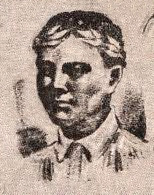
Credit: wikipedia.org
Pedro Bukaneg (March 1592 – c. 1630}
Was a Filipino poet. He is considered the "Father of Ilocano literature." Blind since birth, he is the believed to have authored of parts of the Ilocano epic Biag ni Lam-ang (Life of Lam-ang).
Being a romanticist, he composed poems and songs which were so tenderly sweet that he gained fame among the Ilokano masses as a gifted troubadour. Bukaneg was good not only in poetry but also in oratory.
Pedro Bukaneg was a Filipino poet. He is considered the "Father of Ilocano literature." Blind since birth, he is the believed to have authored of parts of the Ilocano epic Biag ni Lam-ang. A street inside the Cultural Center of the Philippines complex in Pasay, Philippines is named in his honor.
Born: March 1592, Bantay
Died: 1630

Credit:filipinaslibrary.org
Nicanor Abelardo
Kundiman
A composer of over 140 works that included sonatas, concerti and chamber music, Abelardo is best known for elevating the Philippine genre of the Kundiman into a western art-song form.
The Violin Sonata (1931) by Abelardo is a composition for violin and piano that does not fit the characteristics most associated with Philippine music, particularly the Kundiman that Abelardo is best known for during that time period.
Nicanor Santa Ana Abelardo was a Filipino composer known for kundiman songs he wrote before the Second World War.
Born: February 7, 1893, San Miguel
Died: March 21, 1934, Intramuros, Manila
Awards: Awit Award for Best Traditional Recording
Parents: Placida Sta. Ana, Valentine Abelardo
Genres: Kundiman; classical music
SPANISH PERIOD [1521-1871]

Credit: wikipedia.org
Antonio Abad
Antonio M. Abad (1894-1970) was a poet, playwright, essayist and novelist born in Barili (Cebu) and is frequently referred to as “The Greatest Hispanic Filipino Novelist after Rizal”. In 1927, he published his first novel El Último Romantic.
Antonio Abad y Mercado was a prominent Filipino poet, fictionist, playwright, and essayist.
Born: May 10, 1894, Barili
Died: April 20, 1970
Books: Magda: A Three-act Play
Education: University of San Carlos - Talamban Campus
Language: Cebuano, Spanish
Notable awards: Premio Zóbel, Premio Literario Filipino de la Mancomunidad
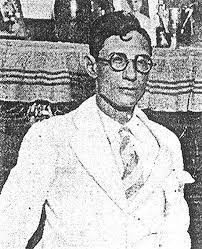
Credit: alchetron.com
Jesus Balmori
He wrote three novels: Bancarrota de Almas (Failure of the Soul), Se Deshojó la Flor (I Tear The Pages Out of The Flower), and Pájaros de Fuego (Birds of Fire) which was completed during the Japanese occupation.
Born: January 10, 1887, Ermita, Manila
Died: May 23, 1948, Mexico City, Mexico
Books: Birds of Fire: A Filipino War Novel
Education: University of Santo Tomas (UST), Colegio de San Juan de Letran
Language: Spanish
PERIOD OF ENLIGHTENMENT(1872-1898)
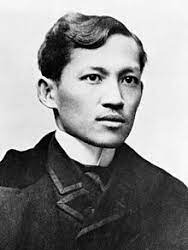
Credit: tatlerasia.com
José Protasio Rizal Mercado y Alonso Realonda
He was a prolific poet, essayist, and novelist whose most famous works were his two novels, Noli Me Tángere (1887) and its sequel, El filibusterismo (1891).
José Protasio Rizal Mercado y Alonso Realonda was a Filipino nationalist, writer and polymath active at the end of the Spanish colonial period of the Philippines. He is considered the national hero of the Philippines.
Born: June 19, 1861, Calamba
Died: December 30, 1896, Rizal Park, Manila
Full name: José Protacio Rizal Mercado y Alonso Realonda
Siblings: Paciano Rizal, Saturnina Hidalgo, Concepción Mercado, MORE
Parents: Teodora Alonso Realonda, Francisco Mercado, Francisco Rizal
Spouse: Josephine Bracken (m. 1896–1896)

Credit: bayaniart.com
Marcelo Hilario del Pilar y Gatmaitán
Also known by his pen name Plaridel, was a Filipino writer, lawyer, journalist, and freemason. In 1882 Del Pilar founded the newspaper Diariong Tagalog to propagate democratic liberal ideas among farmers and peasants. In 1888 he defended José Rizal's polemical writings by issuing a pamphlet against a priest's attack, exhibiting his deadly wit and savage ridicule of clerical follies.
Marcelo H. Del Pilar is the most famous journalist in our history and is also considered as the father of Philippine journalism . His contributions as a lawyer, revolutionary, and propagandist emulates his patriotism, bravery, and intelligence.
Born: August 30, 1850, Bulacan
Died: July 4, 1896, Old Hospital de la Santa Creu, Barcelona, Spain
Nickname: Plaridel
Siblings: Toribio H. del Pilar, Fernando del Pilar, Valentín del Pilar, MORE
Children: Anita H. del Pilar de Marasigan, MORE
Parents: Blasa Gatmaitán, Julián Hilario del Pilar
THE AMERICAN REGIME (1898-1944)

Credit: alchetron.com
Adelina Guerrea
Adelina Guerrea was the first woman poet in the Philippines who was good in Spanish. She obtained the Zobel prize in her song El Nido . (The Nest).
Occupation writer, journalist, poet, playwright, historian, linguist Alma mater Santa Scholastica de Manilla
Died April 29, 1971, Madrid, Spain
María Adelaida Gurrea Monasterio (La Carlota, Negros Occidental, Philippines, September 27, 1896–Madrid, April 29, 1971) was a Philippine journalist, poet and playwright in Spanish.

Credit: peoplepill.com
Macario Adriatico
(10 Marso 1869-14 Abril 1919)
Macario Adriatico wrote of a legend of Mindoro entitle La Punta de Salto (The Place of Origin).
Born: March 10, 1869
Died: April 14, 1919
Scholar, journalist, and politician; known as the “Father of Manila’s City Charter
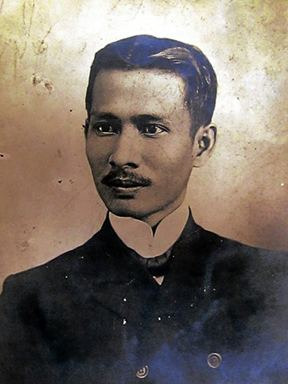
Credit: alchetron.com
Fernando Ma. Guerrero
The king of Balagtasan. His poetry book Crisálidas was published in 1914. Subsequently, he published another verse compilation called Ayes y Flores. Guerrero died on June 12, 1929, coinciding with that year's anniversary of the República Filipina (Philippine Republic). A school in Paco, Manila, was named after him in his honor.
Guerrero was the major lyric poet before and after the revolution, until the introduction of English literature in our schools. Known as the “Prince of Filipino lyric poets” in Spanish, he also played the flute and guitar. In Spanish lyric poetry, he was unsurpassed by his contemporaries.
Born: May 30, 1873, Manila
Died: June 12, 1929, Philippines
Full name: Fernando María Guerrero Ramírez
Children: Evangelina Guerrero Entrala
Education: University of Santo Tomas (UST), Ateneo de Manila University
Nationality: Philippine
Previous office: Member of the Philippine Assembly (1907–1909)
0 notes
Text
TWO FILIPINO WRITERS

CLARO CALUYA
Claro M. Caluya was a Filipino poet, novelist, and journalist born on September 7, 1907, in Batangas, Philippines. He started writing poetry at an early age and became a prominent figure in the Filipino literary scene in the 1930s. Caluya was known for his use of Filipino idioms and his depictions of rural life in his works. He also wrote articles and editorials for various newspapers and magazines. In 1952, he received the Republic Cultural Heritage Award for Literature. Some of his notable works include "Ang Kamatayan ni Tiyo Samuel," "Ang Kalibugan ng Bayan Kong Pilipinas," and "Sa Buwan ng Mayo."

PEDRO BUKANEG
Pedro Bukaneg was a Filipino poet and hero born in the early 16th century in Tuguegarao, Cagayan. He was a blind poet who composed and recited poems in the Ilocano language. His works are regarded as some of the earliest examples of Philippine literature. Bukaneg is also known as the "Father of IlocanoLiterature." He wrote several poems, including "Biag ni Lam- ang," an epic poem that tells the story of a hero who goes on a quest to avenge his father's death. Bukaneg's work has been influential in Philippine literature.
1 note
·
View note
Text
Ilocano Lit| A Reflection of Us, Ilocanos

Literature is one of a kind. It opens opportunities for us readers to take a break from reality to places we've never been or will never be. Just by reading with our wide imagination, we will not only be entertained, but we will also gain knowledge, lessons about life and understanding of the world including the people around us. However, have you heard of the richness of Ilocano literature?
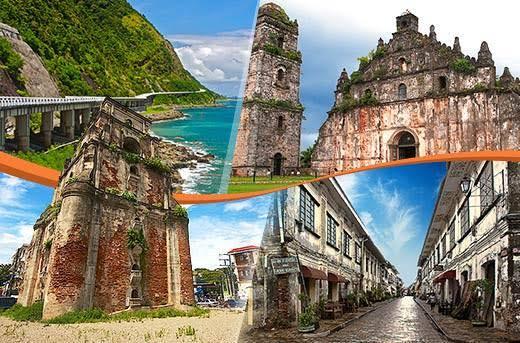
"Iloko" is the language while "Ilocano" refers to the people who speak the Iloko language and lives in the provinces of Ilocos Norte, Ilocos Sur, La Union, and certain sections of Pangasinan, Tarlac, Cagayan, Isabela, Nueva Vizcaya, and Nueva Ecija. There are also some Ilocanos in Apayao, Kalinga, Ifugao, and Mountain Province. The entire region is sometimes called “Ilocandia” or the “Ilocos Region”.
The term Ilocano originates from i-, "from", and looc, "cove or bay", thus "people of the bay." A families and clans arrived by viray or bilog, meaning "boat". Ilocanos also refer to themselves as Samtoy, a contraction from the Ilokano phrase sao mi ditoy, "our language here".
One of the reasons why Ilocanos are known is because of the richness of their literature. In fact, it is believed by scholars to be the richest and most highly developed in the Philippines.

Ilocano literature are the literary works written in foreign or Philippine languages by the Ilocano ancestry writers. It is one of the several regional Philippine literatures. Ilocano literature, next to Tagalog and Philippine Literature in English, is one of the most active tributaries to the general Philippine literature.
Want to know how Ilocano literature developed? Let's see its historical background.
Folk songs, riddles, proverbs, lamentations called dung-aw, and epic tales in written or oral form made up the pre-colonial Iloco literature. The dallot, a long, spontaneous poetry given in a sing-song style, was a form of expression used by ancient Ilokano poets along with folk and battle songs.
During the Spanish regime, Iloko poetry was generally patterned after Spanish models. In fact, the earliest known written Iloko poems were the romances translated from Spanish by Francisco Lopez, an Augustinian friar who, in 1621, published his own Iloko translation of the Doctrina Cristiana by Cardinal Bellarmine, the first book to be printed in Iloko.
During the 18th century, the missionaries used both religious and secular literatures among other means to advance in order to further their goal of converting the Ilocanos to Christianity.
The comedia, otherwise known as the moro-moro, and the zarzuela were presented for the first time in the Ilocos in the 19th century. The comedia, a highly picturesque presentation of the wars between Christians and Muslims, and the zarzuela, an equally picturesque depiction of what is at once melodrama, comic-opera, and the skit interminably preoccupied with the eternal theme of boy-meets-girl-who-always-live-happily-ever-after-against-seemingly-impossible-odds are still as popular today as they were when first staged in the Ilocos.
Today, there is a sizable body of Ilocano literature, including newspapers and periodicals like the Bannawag.
Click this link to gain more information: https://en.m.wikipedia.org/wiki/Ilocano_literature
What's more interesting about Ilocano literature is that there is one piece that survived in the Spanish colonial period and still shines up to now!
Who wouldn't know the oldest, yet greatest Ilocano epic, Biag ni Lam-ang?
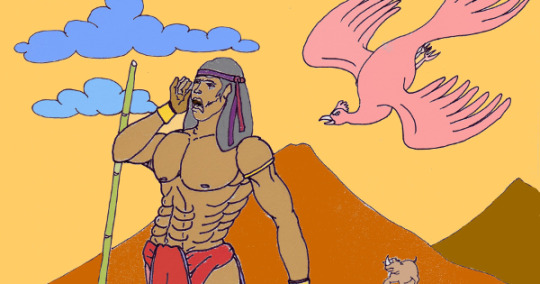
An illustration depicting the protagonist Lam-ang.
For many generations, Biag ni Lam-ang (The Life of Lam-ang) has been passed down orally, then it was later written down and documented during the Spanish Colonial era in the Philippines. It is notable for incorporating Roman Catholic elements into the piece, such as references by the characters of Lam-ang and Ines Kannoyan to marriage as a sacrament.
It tells the story of Lam-ang's life from avenging his father's murder, to being eaten by the water monster Berkakan, to being reborn and living happily ever after with his love, Ines Kannoyan. Furthermore, the epic poem showed some of the customs, culture, tradition and belief of the Ilocano people of the Philippines, including how they value their family. The story also presented some of the qualities of the people of the Ilocos region such as adventurous, hardy, and brave, loyal as strongly portrayed by Lam-ang.
Click the link below to have access on the summary of the Ilocano epic poem, Biag ni Lam-ang:

Ilocano literature indeed has a special place in everyone's heart. This treasure of ours portrays Ilocano's ways of life, beliefs, cultures, traditions, customs, behaviors, ways of thinking, and many more amazing facts about Ilocanos. This literature speaks about who we are, what we are, and what we used to be. Thus, Ilocano literature is the life and identity of Ilocanos.
This is just a glimpse of the richness of Ilocano literature and there are more amazing facts and information waiting to be discovered by you. At this point, you may realize that Ilocano literature is far different from yours. Ilocano literature might portray things that are not normal in your culture, beliefs, tradition, ways of life and the society you used to, but don't stop. Continue reading Ilocano literature because I guarantee that it will be worth it. You already gain awareness about our differences through literature and soon you will understand these differences which makes you to love and appreciate Ilocanos and Ilocano literature deeply.
As you read various Ilocano literature, you will be exposed to various situations. You will experience to be in the shoes of others and think or act like them. You will gain sympathy from others, understanding about differences, lessons about life and it will open your mind as to what reality is all about. Ilocano literature will change you in a good way.
In conclusion, Ilocano literature brings out the best version of ourselves which contributes to making the world a better place to live. A place that is peaceful, sorrounded by love, full of kindness, free from discrimination, and where everyone is open minded, understanding and normalize differences. We can easily have access to a wide range of information in this generation. At this point, use any various means to feed yourself more information about Ilocano literature such as the technology which includes the internet, mobile applications, gadgets and various social media sites etc.
Read and read and read Ilocano literature.
17 notes
·
View notes
Photo

If you’re new to my IG, welcome! If you’re wondering if I’m that one dancing Hange from Tiktok, I am! If you think I played Loid in @thecorpsdancecrew ‘s SpyxFamily set at ALA, then you’re right! My name is Kayla and I am one of the co-founders and current Director for The Corps Dance Crew. I’m a professional dancer performing at Knott’s Berry Farm and Disneyland Resort, I’m a proud Bookseller at Barnes and Noble, I aggressively stan Sakura Haruno and Sasuke sucks. I love Levihan for exactly what it is, to me poetry has to be on the level of Alfred Noyes’ “The Highwayman”, and I am Filipino but unfortunately I’m not fluent in Tagalog, although my parents mostly speak Ilocano and Kapampangan. Welcome to my chaos. . 📸 by @dazpheron #hangezoe #hange #hanji #attackontitan #hangecosplay #hanjicosplay #aot #cosplay #surveycorps https://www.instagram.com/p/CnVs7_Zr3zP/?igshid=NGJjMDIxMWI=
15 notes
·
View notes
Photo

Listen to my new song, “I’m Pinoy.” on Spotify, Apple or iTunes, later this week 👇 https://distrokid.com/hyperfollow/chesspnoi/im-pinoy #rapchatapp #pinoy #rap #rapper #music #rhyme #rhymes #rhyming #rhymer #poet #poetry #poem #poems #musician #musicians #boombap #boombaphiphop #kangol #pinoy #ilocano #hawaii #ilocanos #hiphopculture #hiphopmusic #bandgeek #musician #musicians #musiclife #mixing #mastering #songwriter #spotify #spotifyplaylist (at Okinawa, Okinawa) https://www.instagram.com/p/B6G48cIgZ8X/?igshid=6rz82kqftuhn
#rapchatapp#pinoy#rap#rapper#music#rhyme#rhymes#rhyming#rhymer#poet#poetry#poem#poems#musician#musicians#boombap#boombaphiphop#kangol#ilocano#hawaii#ilocanos#hiphopculture#hiphopmusic#bandgeek#musiclife#mixing#mastering#songwriter#spotify#spotifyplaylist
0 notes
Text
There are around 7 million people who speak Ilocano as their first language, mainly in Northern Luzon, the provinces of La Union and Ilocos, the Cagayan Valley, Babuyan, Mindoro, and Mindanao. Ilokano is also used as a lingua franca in trade, commerce, and everyday conversation by perhaps another 2 million speakers in the northern parts of Luzon. Ilocano is more widely spoken by ethnic groups from the country's northside than Tagalog, which is also its official language. Ilocano does not, however, have official status at this time; it is merely a regional tongue. Only the first few classes of elementary school use it.
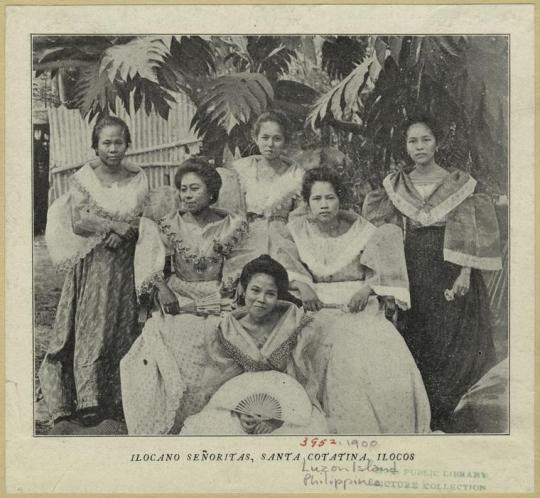
The Ilocanos were the first ethnic group from the Philippines to immigrate in substantial numbers to North America, establishing sizable settlements in Hawai'i, California, and the Pacific.
Ilocano literature, also known as Iloko literature, refers to the literary creations of authors of Ilocano origin, regardless of the language(s) they have written in, including Ilocano, English, Spanish, and other foreign and Philippine languages. The words "Iloko" and "Ilocano" are distinct in the Ilocano language.
HISTORY OF ILOKO LITERATURE
Pre-colonial Iloko Literature-were composed of folk songs, riddles, proverbs, lamentations ( dung-aw), and epic stories written or oral form.
•Ancient Ilokano poets expressed themselves in folk and war songs.
DALLOT- an improvised, versified and at times impromptu long poem delivered in a sing-song manner.
FRANCISCO LOPEZ- an Augustinian friar
-translated the earliest written Iloko poems(romances) from Spanish

-also translated the DOCTRINA CRISTIANA (Cardinal Bellarmine)- the first book to be printed in Iloko.
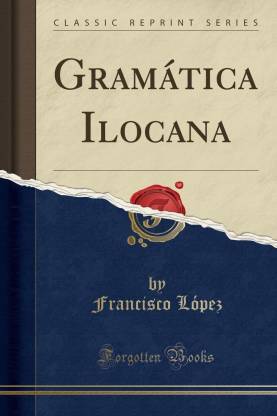
GRAMATICA ILOKANA (1895)
- where the study of Iloko poetry could be found
- based on Lopez’s Arte de la Legua Iloca
PEDRO BUCANEG
- collaborated with Lopez in the translation of the Doctrina into Iloko
- credited for having been the first known
Ilokano poet
- Father of Ilokano Poetry and Literature
- blind since childhood
- authored the popular epic Biag ni Lam-ang (Life of Lam-ang) in the 17th
Ilocano Literary Works
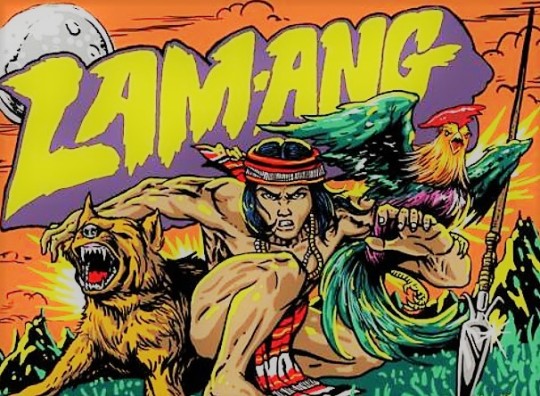
•The poem is thought to have originated as oral literature in pre-colonial times, evolving as it is transmitted from poet to poet and generation to generation. The poem's first written documentation is sometimes credited to the blind Ilocano poet and preacher Pedro Bucaneg, but historian E. Arsenio Manuel gives that honor to Fr. Blanco of Narvacan, who collaborated with publicist and folklorist Isabelo de los Reyes.
The Biag ni Lam-ang narrative teaches us about Philippine history and provides insight into the methods our early ancestors used to identify suitable hunting grounds and establish territorial control. Because our country is full with so many wonderful things and is so magical, it is the ideal place for children to reside. We think that there are living things about us that are unseen to the naked sight, but can nevertheless see us and feel their presence thanks to our instincts.

•In the 1943 short story "My Father Goes to Court," two families with vastly different levels of wealth are shown to be at odds with one another. The plot revolves around the way the impoverished family deals with hardships in life and the way of life of the wealthy family. The wealthy family has a spacious home and servants because they have been awarded a considerable quantity of wealth. Rarely did the wealthy family's children leave their home. Given their high level of purchasing power, the wealthy family can purchase everything they desire and just enjoy it in the comfort of their own home. Too much time spent at home results in inactivity. As they were depicted in the story as being skinny and pale, this prevents them from being healthy.
This tale shows how useless money is without good health. In the narrative, it was mentioned that the underprivileged kids engaged in a variety of physical activities, which is undoubtedly better for their health. The best anti-depressant is a healthy lifestyle or exercise. It also has a good impact on how our brain functions.
Appreciating Ilocano Literature
One of the most dynamic Filipino literary traditions through the ages is Ilocano literature. Ilocano regions are also among the literature of the Philippines' most active tributaries.
We Ilocanos have a rich literature as we have published many stories, songs and many other literary pieces. We should appreciate these because it depicts our culture, traditions, behaviors through literary works.
Literature allows a person to step back in time and learn about life on Earth from the ones who walked before us. We can gather a better understanding of culture and have a greater appreciation of them. We learn through the ways history is recorded, in the forms of manuscripts and through speech itself. Humanity is reflected in literature, and literature helps us to comprehend one another. We can start to understand someone else's way of thinking by listening to their voice. I think literature is significant because it serves a purpose, and books start conversations in a world that is growing more and more disconnected from interpersonal interaction.
4 notes
·
View notes
Photo
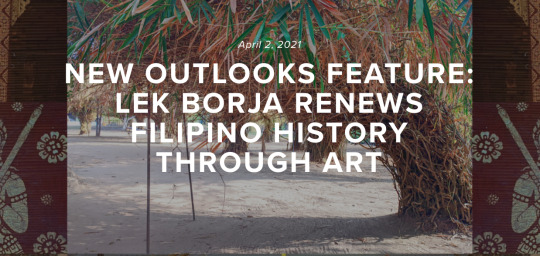
LEK BORJA RENEWS FILIPINO HISTORY THROUGH ART
BY PRECIOUS RINGOR
Asian Pasifika Arts Collective New Outlooks Blog
April 2, 2021
http://ow.ly/fEby50FlQWZ
Editor’s Note: Precious Ringor brings us a second artist profile, this time of Filipino American interdisciplinary artist and poet Lek Borja, whose work is an attempt to track the continuous colonization across time, first within the Philippines from Spain and the United States, through present day America and trying to give voice to Filipino life against a white hegemony. Precious displays how Lek crosses borders of cultural stereotypes, seeking to expand the visions placed on Filipinos by other oppressive powers, and inserting her culture in art spaces where they are new and unfamiliar, but for the community, reminders of home.
Header Image: “Heritage at the Threshold” by Timothy Singratsomboune | Digital photography collage, 5400 x 4050 px, 2021.
Getting to know someone virtually is one of the sad realities we’ve had to face because of COVID-19 regulations. It’s both a blessing and a curse—we’ve become a global village, but at the same time we’ve all had more eye and back problems from sitting around and zooming this past year.
A zoom call and an hour was all I had to get to know Lek Vercauteren Borja, a Filipino American interdisciplinary artist and poet widely known for her thought-provoking work into the Asian diaspora. Chatting with Lek didn’t feel like a job though; time flies fast when you’re having fun.
One of the things I noted was Lek’s warm and friendly nature. Most of the time, it’s uncommon for an interviewee to ask questions about the interviewer. Lek unabashedly admitted that she did a bit of ‘stalking’ before we hopped on Zoom, “I like to know about the person I’m talking with, even before the interview starts.”
Lek started in poetry. Armed with a love for Shakespeare, she pursued a dual concentration in Art and Creative Writing at Antioch University. It was there that she first fell in love with art history and sculpture. During that time, her first chapbook, Android, was published by Plan B Press. She took this as a sign to continue pursuing a career in arts.
As an artist, she admits that’s where she gets inspiration from, “I want to talk about the history of Filipinos, the invisible stories. Growing up in the Philippines and studying there, I realized there was a lot missing in our history books. It seemed as if it were written from a western perspective.” She reminded me so much of the Philippines, of home. Because of our similar upbringing, I immediately understood her search for truth.
The themes of home and longing, of memory and the present, and of giving Filipino lives new voices, carry across her work, and no more palpably than her piece Evolution of the Aswang Myth, what she calls “seed and the origin” to all her current works. Lek says “Without it, I wouldn’t be thinking about art, the way I’m making now.” This 8 x 8 feet painting explores the origins of the aswang or manananggal, a Filipino mythical creature typically depicted as a woman feared for its penchant for eating infants and unborn fetuses during the night. Interestingly, the aswang was also a word ascribed to the Filipina women who went against the forced religious conversion by Spanish friars during their colonization of the Philippines.
March 2021 marked 500 years since Spanish ships first arrived on the shores of the Philippines.
Since then, our country fought hard for liberation, first from Spain and then from the United States of America. In retrospect, it hasn’t been long since the Philippines became an independent nation. Today, we are striving to find our voice amidst the imperialistic erasure we’ve endured.
As Lek puts it, “What propelled me to tell these stories is the feeling that I had no voice. For one, I didn’t speak English well so I couldn’t really talk about what I was going through or how I felt. That’s why a lot of my work now focuses on bringing my experiences of living in the Philippines at the forefront and seeing how that’s connected to bigger conversations and narratives around us.”
Currently, Lek’s work called Anak (My Child) is being featured in the gallery at Towson University’s Asian Arts & Culture Center.
View Anak (My Child) Exhibit: https://towson.edu/anak
Besides online exhibitions and virtual galleries, Lek is also conducting several workshops in Baltimore’s upcoming Asia North Festival. These workshops are a good model for Lek’s philosophy in making art out of personal histories. Whether it’s experiences of displacement or change, she points out that everyone’s story matters and there will always be a community of people who can empathize with that.
“I think it’s really important for our stories to be brought to light in the larger narrative. They think by calling us model minority, our problems can easily be brushed aside” I lamented the steady rise of xenophobic crimes these past few months.
“I agree, it’s a really complex issue” Lek adds, “Why are we so silent? Why do we stand in the shadows? I’ll probably look for an answer my entire life. It’s hard to talk about our struggles and it’s not easy to have conversations about the past. There’s a culture of silence that’s been normalized and it’s perpetuated even in our own homes. But that’s part of the work I do, bringing everything from the past into the forefront so we can have deeper conversations about it.”
Speaking of the past, Lek’s introduction to the arts started in Tarlac, a city located north of the Philippines. Besides being known as the most multicultural province, the city is home to numerous sugar and rice plantations. “The population of our barrio was probably less than 1,000. Our family had a farm as well as a sugar-cane and rice field plantation. My inang [grandmother] also worked in the market as a butcher. It was a pretty simple country lifestyle but my childhood was amazing.”
Life in the country has been instrumental to Lek’s artistry. “The memory of the landscape and of the community is an extension of my art,” Lek explains. As a young girl, her biggest inspiration comes from her grandfather who, like herself, was also an artist. Lek would copy his drawings and eventually create drawings of her own. Recently, Lek has started to incorporate banana leaves into her work. Banana leaves are incredibly important to Filipino culture as it is used for cooking and traditional homebuilding.
“Sounds like you had to find your own path, coming here at such a young age and experiencing culture shock. America is very different from the Philippines!” I quipped.
“It was snowing where I first came here!” she exclaimed, thinking back to her initial introduction of America. “It was November when we landed in New York, it was freezing. I remember our families bundling us in huge warm winter coats before wecould even say hello. It was definitely a huge shock.”
I laugh, thinking back to when I first arrived in California ten years ago. Silly to think I was already freezing in sunny temperatures when she had to endure piles of snow. “Do you think you’ve had to change yourself in order to adjust to that culture shock?”
“For a long time I really didn’t know who I was,” Lek admits. “When I was younger, the school I went to was predominantly white. What I thought about how I should present myself came from that image. I dyed my hair blond and put on blue colored contacts to fit in. It was a lot of assimilation and cultural erasure. I started talking less Tagalog and less Ilocano. But art has really helped me find myself. It made me think more deeply about who I really was and what was important to me on an authentic level.”
Halfway through our conversation, we slowly realized just how similar we were. From migrating at the age of ten to living twenty miles apart in the same city. It was also in chatting that Lek found out I spoke Tagalog fluently, one thing she regrets losing unexpectedly. As it is my first language, Lek asked me to speak it instead. Once again, her warm nature bled through the Zoom interview; I found it refreshing since hardly anyone thinks about the interviewer’s comfort.
Unsurprisingly, community building is important to Lek. Before working, she likes to ask herself the following questions, ‘How is what I’m doing connected to my family and everyone in the Filipino community? How can I better serve my community?’ One of the main reasons she moved to L.A. is to network with other Filipino artists.
“A few years ago, I showed my art alongside a group of all Filipino artists at Avenue 50 Studio gallery for an exhibition that Nica Aquino and Anna Calubayan organized (also both Filipinas). It’s crazy because I’ve lived in and out [of L.A.] for over 10 years now and it was only in 2019 that I started to be part of that community. It’s probably the most fun I've had at an art show, I really felt at home.”
“I’d love to visit the studio’s galleries once it’s safer to go outside”
“Definitely! I’ll keep you updated on any gatherings” Lek pitched excitedly.
“And I'll bring you guys homemade ube cakes and puto pao!” I teasingly replied back.
As our call came to a close I couldn’t help but ask Lek if she had any advice to give to budding AAPI artists.
“I’ll echo what people who have supported me have said in the past: trust yourself and trust that you can make a difference. It’s hard to figure out who you want to be when [the world] has expectations and demands from you. We’re lucky to live in a time where there’s so many possibilities. Figure out what you want to do authentically and genuinely, and go for it.”
Lek continues on, “Personally, it took me a long time to find my voice. When I was in grad school, I had a lot of doubt in myself because most visiting artists and curators couldn’t understand my work. What made it all worth it were the moments that people got [my voice] right away.”
Getting to know Lek and learning about her commitment to showcasing invisible stories has been awe-inspiring; it made me proud to be a Filipino American artist. And in the wake of our hurting AAPI community, I believe it’s incredibly important, now more than ever, to highlight and support works of people like Lek. People who have had to fight for their voice in this world, who our youth could look up to and be inspired to become.
About the Author:
Precious Ringor is a Filipino-American singer/actress/writer residing in Los Angeles, CA. Ringor graduated from Cal State University, Fullerton with a degree in Human Communication Studies where her research is geared towards Asian American socio-cultural communication norms. Besides performing in various theatre shows and indie film sets, Ringor also works as a content contributor to Film Fest Magazine and Outspoken
3 notes
·
View notes
Text
The Literary Forms in Philippine Literature
by: Christine F. Godinez-Ortega
The diversity and richness of Philippine literature evolved side by side with the country's history. This can best be appreciated in the context of the country's pre-colonial cultural traditions and the socio-political histories of its colonial and contemporary traditions.
The average Filipino's unfamiliarity with his indigenous literature was largely due to what has been impressed upon him: that his country was "discovered" and, hence, Philippine "history" started only in 1521.
So successful were the efforts of colonialists to blot out the memory of the country's largely oral past that present-day Filipino writers, artists and journalists are trying to correct this inequity by recognizing the country's wealth of ethnic traditions and disseminating them in schools and in the mass media.
The rousings of nationalistic pride in the 1960s and 1970s also helped bring about this change of attitude among a new breed of Filipinos concerned about the "Filipino identity."
Pre-Colonial Times
Owing to the works of our own archaeologists, ethnologists and anthropologists, we are able to know more and better judge information about our pre-colonial times set against a bulk of material about early Filipinos as recorded by Spanish, Chinese, Arabic and other chroniclers of the past.
Pre-colonial inhabitants of our islands showcase a rich past through their folk speeches, folk songs, folk narratives and indigenous rituals and mimetic dances that affirm our ties with our Southeast Asian neighbors.
The most seminal of these folk speeches is the riddle which is tigmo in Cebuano, bugtong in Tagalog, paktakon in Ilongo and patototdon in Bicol. Central to the riddle is the talinghaga or metaphor because it "reveals subtle resemblances between two unlike objects" and one's power of observation and wit are put to the test. While some riddles are ingenious, others verge on the obscene or are sex-related.
The proverbs or aphorisms express norms or codes of behavior, community beliefs or they instill values by offering nuggets of wisdom in short, rhyming verse.
The extended form, tanaga, a mono-riming heptasyllabic quatrain expressing insights and lessons on life is "more emotionally charged than the terse proverb and thus has affinities with the folk lyric." Some examples are the basahanon or extended didactic sayings from Bukidnon and the daraida and daragilon from Panay.
The folk song, a form of folk lyric which expresses the hopes and aspirations, the people's lifestyles as well as their loves. These are often repetitive and sonorous, didactic and naive as in the children's songs or Ida-ida (Maguindanao), tulang pambata (Tagalog) or cansiones para abbing (Ibanag).
A few examples are the lullabyes or Ili-ili (Ilongo); love songs like the panawagon and balitao (Ilongo); harana or serenade (Cebuano); the bayok (Maranao); the seven-syllable per line poem, ambahan of the Mangyans that are about human relationships, social entertainment and also serve as a tool for teaching the young; work songs that depict the livelihood of the people often sung to go with the movement of workers such as the kalusan (Ivatan), soliranin (Tagalog rowing song) or the mambayu, a Kalinga rice-pounding song; the verbal jousts/games like the duplo popular during wakes.
Other folk songs are the drinking songs sung during carousals like the tagay (Cebuano and Waray); dirges and lamentations extolling the deeds of the dead like the kanogon (Cebuano) or the Annako (Bontoc).
A type of narrative song or kissa among the Tausug of Mindanao, the parang sabil, uses for its subject matter the exploits of historical and legendary heroes. It tells of a Muslim hero who seeks death at the hands of non-Muslims.
The folk narratives, i.e. epics and folk tales are varied, exotic and magical. They explain how the world was created, how certain animals possess certain characteristics, why some places have waterfalls, volcanoes, mountains, flora or fauna and, in the case of legends, an explanation of the origins of things. Fables are about animals and these teach moral lessons.
Our country's epics are considered ethno-epics because unlike, say, Germany's Niebelunginlied, our epics are not national for they are "histories" of varied groups that consider themselves "nations."
The epics come in various names: Guman (Subanon); Darangen (Maranao); Hudhud (Ifugao); and Ulahingan (Manobo). These epics revolve around supernatural events or heroic deeds and they embody or validate the beliefs and customs and ideals of a community. These are sung or chanted to the accompaniment of indigenous musical instruments and dancing performed during harvests, weddings or funerals by chanters. The chanters who were taught by their ancestors are considered "treasures" and/or repositories of wisdom in their communities.
Examples of these epics are the Lam-ang (Ilocano); Hinilawod (Sulod); Kudaman (Palawan); Darangen (Maranao); Ulahingan (Livunganen-Arumanen Manobo); Mangovayt Buhong na Langit (The Maiden of the Buhong Sky from Tuwaang--Manobo); Ag Tobig neg
Keboklagan (Subanon); and Tudbulol (T'boli).
The Spanish Colonial Tradition
While it is true that Spain subjugated the Philippines for more mundane reasons, this former European power contributed much in the shaping and recording of our literature. Religion and institutions that represented European civilization enriched the languages in the lowlands, introduced theater which we would come to know as komedya, the sinakulo, the sarswela, the playlets and the drama. Spain also brought to the country, though at a much later time, liberal ideas and an internationalism that influenced our own Filipino intellectuals and writers for them to understand the meanings of "liberty and freedom."
Literature in this period may be classified as religious prose and poetry and secular prose and poetry.
Religious lyrics written by ladino poets or those versed in both Spanish and Tagalog were included in early catechism and were used to teach Filipinos the Spanish language. Fernando Bagonbanta's "Salamat nang walang hanga/gracias de sin sempiternas" (Unending thanks) is a fine example that is found in the Memorial de la vida cristiana en lengua tagala (Guidelines for the Christian life in the Tagalog language) published in 1605.
Another form of religious lyrics are the meditative verses like the dalit appended to novenas and catechisms. It has no fixed meter nor rime scheme although a number are written in octosyllabic quatrains and have a solemn tone and spiritual subject matter.
But among the religious poetry of the day, it is the pasyon in octosyllabic quintillas that became entrenched in the Filipino's commemoration of Christ's agony and resurrection at Calvary. Gaspar Aquino de Belen's "Ang Mahal na Passion ni Jesu Christong Panginoon natin na tola" (Holy Passion of Our Lord Jesus Christ in Verse) put out in 1704 is the country's earliest known pasyon.
Other known pasyons chanted during the Lenten season are in Ilocano, Pangasinan, Ibanag, Cebuano, Bicol, Ilongo and Waray.
Aside from religious poetry, there were various kinds of prose narratives written to prescribe proper decorum. Like the pasyon, these prose narratives were also used for proselitization. Some forms are: dialogo (dialogue), Manual de Urbanidad (conduct book); ejemplo (exemplum) and tratado (tratado). The most well-known are Modesto de Castro's "Pagsusulatan ng Dalawang Binibini na si Urbana at si Feliza" (Correspondence between the Two Maidens Urbana and Feliza) in 1864 and Joaquin Tuason's "Ang Bagong Robinson" (The New Robinson) in 1879, an adaptation of Daniel Defoe's novel.
Secular works appeared alongside historical and economic changes, the emergence of an opulent class and the middle class who could avail of a European education. This Filipino elite could now read printed works that used to be the exclusive domain of the missionaries.
The most notable of the secular lyrics followed the conventions of a romantic tradition: the languishing but loyal lover, the elusive, often heartless beloved, the rival. The leading poets were Jose Corazon de Jesus (Huseng Sisiw) and Francisco Balagtas. Some secular poets who wrote in this same tradition were Leona Florentino, Jacinto Kawili, Isabelo de los Reyes and Rafael Gandioco.
Another popular secular poetry is the metrical romance, the awit and korido in Tagalog. The awit is set in dodecasyllabic quatrains while the korido is in octosyllabic quatrains. These are colorful tales of chivalry from European sources made for singing and chanting such as Gonzalo de Cordoba (Gonzalo of Cordoba) and Ibong Adarna (Adarna Bird). There are numerous metrical romances in Tagalog, Bicol, Ilongo, Pampango, Ilocano and in Pangasinan. The awit as a popular poetic genre reached new heights in Balagtas' "Florante at Laura" (ca. 1838-1861), the most famous of the country's metrical romances.
Again, the winds of change began to blow in 19th century Philippines. Filipino intellectuals educated in Europe called ilustrados began to write about the downside of colonization. This, coupled with the simmering calls for reforms by the masses gathered a formidable force of writers like Jose Rizal, Marcelo H. del Pilar, Mariano Ponce, Emilio Jacinto and Andres Bonifacio.
This led to the formation of the Propaganda Movement where prose works such as the political essays and Rizal's two political novels, Noli Me Tangere and the El filibusterismo helped usher in the Philippine revolution resulting in the downfall of the Spanish regime, and, at the same time planted the seeds of a national consciousness among Filipinos.
But if Rizal's novels are political, the novel Ninay (1885) by Pedro Paterno is largely cultural and is considered the first Filipino novel. Although Paterno's Ninay gave impetus to other novelists like Jesus Balmori and Antonio M. Abad to continue writing in Spanish, this did not flourish.
Other Filipino writers published the essay and short fiction in Spanish in La Vanguardia, El Debate, Renacimiento Filipino, and Nueva Era. The more notable essayists and fictionists were Claro M. Recto, Teodoro M. Kalaw, Epifanio de los Reyes, Vicente Sotto, Trinidad Pardo de Tavera, Rafael Palma, Enrique Laygo (Caretas or Masks, 1925) and Balmori who mastered the prosa romantica or romantic prose.
But the introduction of English as medium of instruction in the Philippines hastened the demise of Spanish so that by the 1930s, English writing had overtaken Spanish writing. During the language's death throes, however, writing in the romantic tradition, from the awit and korido, would continue in the novels of Magdalena Jalandoni. But patriotic writing continued under the new colonialists. These appeared in the vernacular poems and modern adaptations of works during the Spanish period and which further maintained the Spanish tradition.
The American Colonial Period
A new set of colonizers brought about new changes in Philippine literature. New literary forms such as free verse [in poetry], the modern short story and the critical essay were introduced. American influence was deeply entrenched with the firm establishment of English as the medium of instruction in all schools and with literary modernism that highlighted the writer's individuality and cultivated consciousness of craft, sometimes at the expense of social consciousness.
The poet, and later, National Artist for Literature, Jose Garcia Villa used free verse and espoused the dictum, "Art for art's sake" to the chagrin of other writers more concerned with the utilitarian aspect of literature. Another maverick in poetry who used free verse and talked about illicit love in her poetry was Angela Manalang Gloria, a woman poet described as ahead of her time. Despite the threat of censorship by the new dispensation, more writers turned up "seditious works" and popular writing in the native languages bloomed through the weekly outlets like Liwayway and Bisaya.
The Balagtas tradition persisted until the poet Alejandro G. Abadilla advocated modernism in poetry. Abadilla later influenced young poets who wrote modern verses in the 1960s such as Virgilio S. Almario, Pedro I. Ricarte and Rolando S. Tinio.
While the early Filipino poets grappled with the verities of the new language, Filipinos seemed to have taken easily to the modern short story as published in the Philippines Free Press, the College Folio and Philippines Herald. Paz Marquez Benitez's "Dead Stars" published in 1925 was the first successful short story in English written by a Filipino. Later on, Arturo B. Rotor and Manuel E. Arguilla showed exceptional skills with the short story.
Alongside this development, writers in the vernaculars continued to write in the provinces. Others like Lope K. Santos, Valeriano Hernandez Peña and Patricio Mariano were writing minimal narratives similar to the early Tagalog short fiction called dali or pasingaw (sketch).
The romantic tradition was fused with American pop culture or European influences in the adaptations of Edgar Rice Burroughs' Tarzan by F. P. Boquecosa who also penned Ang Palad ni Pepe after Charles Dicken's David Copperfield even as the realist tradition was kept alive in the novels by Lope K. Santos and Faustino Aguilar, among others.
It should be noted that if there was a dearth of the Filipino novel in English, the novel in the vernaculars continued to be written and serialized in weekly magazines like Liwayway, Bisaya, Hiligaynon and Bannawag.
The essay in English became a potent medium from the 1920's to the present. Some leading essayists were journalists like Carlos P. Romulo, Jorge Bocobo, Pura Santillan Castrence, etc. who wrote formal to humorous to informal essays for the delectation by Filipinos.
Among those who wrote criticism developed during the American period were Ignacio Manlapaz, Leopoldo Yabes and I.V. Mallari. But it was Salvador P. Lopez's criticism that grabbed attention when he won the Commonwealth Literay Award for the essay in 1940 with his "Literature and Society." This essay posited that art must have substance and that Villa's adherence to "Art for Art's Sake" is decadent.
The last throes of American colonialism saw the flourishing of Philippine literature in English at the same time, with the introduction of the New Critical aesthetics, made writers pay close attention to craft and "indirectly engendered a disparaging attitude" towards vernacular writings -- a tension that would recur in the contemporary period.
The Contemporary Period
The flowering of Philippine literature in the various languages continue especially with the appearance of new publications after the Martial Law years and the resurgence of committed literature in the 1960s and the 1970s.
Filipino writers continue to write poetry, short stories, novellas, novels and essays whether these are socially committed, gender/ethnic related or are personal in intention or not.
Of course the Filipino writer has become more conscious of his art with the proliferation of writers workshops here and abroad and the bulk of literature available to him via the mass media including the internet. The various literary awards such as the Don Carlos Palanca Memorial Awards for Literature, the Philippines Free Press, Philippine Graphic, Home Life and Panorama literary awards encourage him to compete with his peers and hope that his creative efforts will be rewarded in the long run.
With the new requirement by the Commission on Higher Education of teaching of Philippine Literature in all tertiary schools in the country emphasizing the teaching of the vernacular literature or literatures of the regions, the audience for Filipino writers is virtually assured. And, perhaps, a national literature finding its niche among the literatures of the world will not be far behind.
23 notes
·
View notes
Text
PHILIPPINE HISTORY
♣️The first book written in the Philippines was DOCTRINA CRISTIANA.
♣️The Father of Ilocano Literature is PEDRO BUKANEG.
♣️The Father of Tagalog Poetry is FRANCISCO BALTAZAR.
♣️Lola Basyang is the pen name of SEVERINO REYES.
♣️The first and longest running komiks series in the Philippines is KENKOY(Liwayway Magasin,1929)
♣️The Father of Pampango Literature who wrote There is no God is JUAN CRISOSTOMO SOTO.
♣️The oldest existing newspaper in the Philippines since the 1900 is MANILA BULLETIN.
♣️The Father of Modern Tagalog Poetry is ALEJANDRO ABADILLA.
♣️The work of Bonifacio which tells the history of the Philippines ANG DAPAT MABATID NG MGA TAGALOG.
♣️He wrote the popular fable The Monkey and the Turtle - JOSE RIZAL
♣️This is known as Andres Bonifacio's Ten Commandments of the Katipunan - THE DECALOGUE.
♣️Rizal's model for Pilosopong Tasyo was PACIANO RIZAL.
♣️The following characters created by rizal reflect his own personality except SIMOUN (El Filibusterismo)
♣️The line 'whoever knows not how to love his native tongue is worse than any beast or even smelly fish' TO MY FELLOW CHILDREN
♣️Rizal's pen name - DIMASALANG, LAONG-LAAN
♣️Taga-ilog is JUAN LUNA's Pen name.
♣️The first filipino alphabet was called ALIBATA/BAYBAYIN
♣️the first filipino alphabet consisted of 15 LETTERS
♣️This is a song about love - TALINDAW, awit ng mga taong hindi naimbetahan sa kainan (COLADO)
♣️He was known for his `Memoria Fotografica` - JOSE MA. PANGANIBAN
♣️He is known as the `poet of the workers or laborers` - AMADO HERNANDEZ
♣️Ilocano balagtasan is called BUKANEGAN
♣️Visayan epic about good manners and right conduct - MARAGTAS
♣️The father of Filipino newspaper is PASCUAL POBLETE
♣️Lupang Tinubuan is considered to be the best story written during Japanese Period. The author is NARCISO REYES
♣️The original title of Ibong Adarna was CORIDO AT BUHAY NA PINAGDAANAN NG TATLONH PRINSIPENG ANAC NG HARING FERNANDO AT REYNA VALERIANA SA CAHARIANG BERBANIA
♣️PANDEREGLA - first filipino bread
♣️The Great Plebian: Andres Bonifacio
♣️The Father of the Katipunan: Andres Bonifacio
♣️Hero of the Tirad Pass Battle: Gregorio Del Pilar
♣️President of the First Philippine Republic: General Emilio Aguinaldo
♣️Brains of the Philippine Revolution: Apolinario Mabini
♣️Martyred Priests in 1872: GOMBURZA
♣️Brains of the Katipunan: Emilio Jacinto
♣️Co-founder of La Independencia: General Antonio Luna
♣️Mother of Balintawak: Melchora Aquino
♣️Greatest Filipino Orator of the Propaganda Movement: Graciano Lopez- Jaena
♣️First Filipino Cannon-maker: Pandar Pira
♣️Managing Editor of La Solidaridad: Mariano Ponce
♣️Lakambini of Katipunan: Gregoria de Jesus
♣️Poet of the Revolution: Fernando Ma. Guerrero
♣️Outstanding Diplomat of the First Philippine Republic: Felipe Agoncill
♣️First University of the Philippines President: Rafael Palma
♣️Greatest Filipino Painter: Juan Luna
Greatest Journalist of the Propaganda
♣️Movement: Marcelo H. del Pilar
♣️First Filipino Poetess: Leona Florentino
♣️Peace of the Revolution: Pedro Paterno
♣️Founder of Philippine Socialism: Isabelo
♣️Delos Reyes Viborra: Artemio Ricarte
♣️Author of the Spanish lyrics of the Philippine National Anthem: Jose Palma
♣️Chief of Tondo: Lakandola
♣️The Last Rajah of Manila: Rajah Soliman
♣️Fiancée of Jose Rizal: Leonor Rivera
♣️Maker of the
First Filipino Flag: Marcela Agoncillo
♣️Co-founder of Katipunan: Galicano Apacible
♣️Leader of the Ilocano Revolt: Diego Silang
♣️First Filipino Hero: Lapu-lapu
♣️Leader of the Longest Revolt in Bohol: Francisco Dagohoy
♣️The Man of Many Talents: Epifanio Delos Santos
♣️Prince of Tagalog Poets: Francisco Baltazar
♣️Visayan Joan of Arc: Teresa Magbanua
♣️Mother of Biak-na-Bato: Trinidad Tecson
♣️Wife of Artemio Ricarte: Agueda
♣️EstebanLeader of the Tarlac Revolt: Gen. Francisco Makabulos
♣️Composer of the Philippine National Anthem: Julian Felipe
♣️Spaniards born in the Philippines: Insulares
♣️Leader of Magdalo: Baldomero Aguinaldo
♣️Leader of Magdiwang: Mariano Alvarez
♣️Founder of La Liga Filipina: Jose Rizal
♣️Painter of the Spolarium: Juan Luna
45 notes
·
View notes
Text
get to know me meme
invited to do this by: @whyamistillonthisite
I tag: *can’t think of anyone hahahaha i don’t have that many friends here*
I’m doing this now before I forget
Nicknames: I introduced myself as Almeera in medical school but my high school and college nickname was something else.
Zodiac Sign: Leo
Height: 5′4′’ (on good days, haha). I fervently wish to wake up one day and be at least 2 inches taller but we can’t have everything so...
The last thing I googled: The album to which Stay A Little Longer by Lostboycrow belongs to
Favorite musicians: I used to listen to a lot of Punk bands but these days, I just listen to whatever sounds good. I still listen to those punk bands every now and then but really, I cycle through artists so much. I like Backstreet Boys, The 1975, Coldplay, Haim, Oh Wonder, Ed Sheeran, and of course Filipino musicians (Hale, Autotelic). I like this German band Revolverheld and Wincent Weiss, I am lately getting into Kpop too (Epik High and BTS, but Epik High is on another level). My music library is all over the place.
Following: I don’t know. I don’t keep track.
Followers: 1500++ (most of which are probably bots and inactive users)
Do you get asks: NO
Amount of sleep: 6-12 hours. For the past 2 weeks, 12 hours. On average school days, 6 hours. I like my sleep and naps.
Lucky number: I don’t believe in lucky numbers but I always see 8 or 27 in anything I own that comes with a number.
What you’re wearing: shirt and shorts. I live in the tropics.
Dream job: As a child, I wanted to be a bookshop owner, a teacher, a doctor, an astronaut, a princess, an anime character, an artist all rolled into one.
I am currently studying to be a doctor so I guess I can only manage to be a doctor-teacher. A bookshop owner on the side, perhaps?
If I didn’t have to worry about money, I think I’d be content with being a bookshop owner, that’s a humble and unproblematic thing to be.
Dream trip: The one in which I am not on budget. The one in which I am exploring.
Languages: Filipino, Ilocano, English. Ein bisschen Deutsch (as in the kindergarten level I learned in college). I can understand some phrases in Korean (because I watch a lot of Kdrama)
Favorite songs: Chaiyya Chaiyya from that old Shahrukh Khan movie. Have u seen the translation? It’s poetry. But I also like Barry Manilow’s Mandy and I always fall in love with Into Your Arms by The Maine. But then again, I cycle through artists and songs so much, my favorites change a lot. I think this is an impossible question.
Random fact: I double knot my shoe laces. I don’t feel secure at all with just a single knot.
Aesthetic: The words of Milan Kundera or Vladimir Nabokov. Ocean/ship metaphors (I write about such metaphors a lot). Puns and amazing and witty play on words bring me joy. Breakfast food at anytime of the day. Nature (like the ocean when the sun is about to set). Comfort and contentment--the feel of a soft and clean bed. Some peace and quiet, as in when no one is around and I’m absorbed in myself. Music that moves me, whether or not I am able to understand the lyrics.
(I understand aesthetics as things that instill in me some sense of emotion; that’s not what it probably is in philosophy so educate me) —————
R U L E S: put your playlist on shuffle, and put down the first 10 songs that play
The Sound - The 1975
To Love and Back - This Century
The River Flows in You - Yiruma
Into Your Arms - The Maine
I Want It That Way - Backstreet Boys
Afire Love - Ed Sheeran
I’ll Be Good - Jaymes Young
Drive - Halsey
Je Ne Parle Pas Francais - Namika
Seoul - RM (Namjoon)
1 note
·
View note
Text
The Girl from Bauko
a short story by an Ilocano writer.
BAUKO IS a remote mountain town up in the wilds of the Cordilleras. It is some five thousand feet above sea level, and thick fog covers the towering mountain slopes every day, even in mid-summer, and the golden sun hardly be seen at high noon.

Of all stories - love stories - worth remembering my Father told me, not one can surpass the poignant story of a ravishing and winsome mountain lass by the name of Maila.
Maila was a Kankanay, one of the principal tribes of mountain Province. Indeed, Maila was a bundle of unsurpassed pulchitrude and vivacity, possessing a pair of bewitching dimples in her rosy checks, deep as the ravines surrounding her father's luxuriant mountain clearing up in Bauko.
The epic story of World War II would be incomplete and colorless without this beauteous mountain lass Maila, Father would tell me with a sparkle in his eyes, because Maila was everything to him during those dismal , difficult years of enemy occupation.
Father was a guerillero during the war. He was not a professional soldier, he repeatedly told me, since before the outbreak of the Pacific War he was still young, vibrant and innicent, and was bent on his studies at the U.P. in Padua Faura.
Those days were the golden days of the Commonwealth under the tutelage of the charismatic political leader, Manuel L. Quezon. Padre Faura then was quiet and shady with giant acacia trees, branching towards the sky on both shoulders of the street, affording cool shades for the boisterous groups of colegialas heading towards the big and spacious corridors of the State University and the Ateneo.
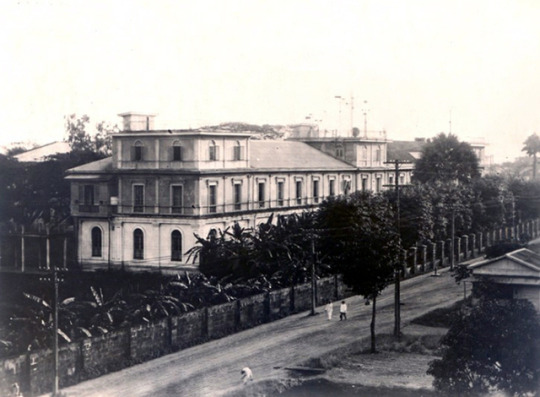
Father joined the army probably because of compulsion of maybe he was afraid of those slit-eyed Japanese soldiers. In the mid-thirties, the cream of the Filipino manhood was called to undergo compulsory five-and-a-half-mo the training in a care all over the islands; Father was among them, although he opted to take summer infantry training in Camp Murphy, the premier army camp I those days.
Prewar trainees and cadets of the ROTC units of Manila's colleges, were on the list of the Japanese Empire and sure death was the penalty for being one of them.
Why and how bphe came to Bauko, he did not tell me, but guerilla rose in those difficult years lived anywhere in the wilds of Northern Luzon.
Perhaps the dense mountain growths of the Cordillera ranges provided safe sanctuary for them. They were wanted by the Japanese forces for sure and once the were caught, they were herded like animals to a monkey house with grills and baked under the burning sun to be skinned alive or tortured to death by all kinds of painful methods as by bayonet thrusts, merciless clubbings and by water cure. Japanese soldiers were no better than barbarians in Marco Polo time.
"I had a co-guerillo by the name of Lacuasan," Father would recall. "This man Lacuasan was as my age and was a native of sturdy Kankanay stock. Most of the time he wore a g-string and was armed with a hatchet and a spear. He had a perfect physique, with bulging muscles throughout his whole anatomy -- easily he could have competed with Charles Atlas or Henry Liederman.

Lacuasan was a runner, a courrier, of the famed 66th Infantry, the guerrilla outfit composed of mountain tribes -- fierce-looking Kalingas and half-civilized Bontocs and Ifugaos, much-feared headhunters of the mountain provinces. Lacuasan was fast moving in spite of his size Climbing treacherous and slippery trails like a deer, he knew every bend and waterhole in the vast plateaus of Bauko.
The 66th Infantry was commanded by a greying American officer, Major Parker Calvert, a West Pointer, who refused to follow the surrender orders of General Wainwright following the fall of Corregidor.
It was Lakuasan who invited Father to his mountain clearing atop a lonely knoll in Bauko. The hut he owned was a small one, surrounded by a wide swath of camote patch; around the hut were chayote vines laden with fruits. Below the clearing was a picturesque valley where a meandering river curled it's way with water sparkling with foam and the pine trees roared when the north wind passed by.
"I believe you feel sad and lonely," Lacuasan told Father. Although Father carried a higher Rankin their outfit, Lacuasan simply called Father by his nickname, Andy. Father liked it that way.
There was evening when Father and Lacuasan spent their time keeping away the seeping cold and wetness of Bauko weather by sipping tapey, the homemade rice wine of the natives.
This liquor was made with fermented rice, sweet varietals of the upland strains, sprinkled with binubudan, powdered rice with crushed ginger and yeast. Some was fermented and brewed using sweet upland corn.
"Have you ever visited our ulog before, Andy?" Lacuasan asked, his eyes sparkling like two tiny stars. Father shook his head, his curly hair waving in the cool breeze like young bamboo swaying with the wind in an August storm. Father at the time looked like a Robinson Crusoe, marooned on a lonely island in the South Pacific. He had gone a year without a haircut and was looking shabby with a long beard that covered the contours of his mouth.

"Come," Lacuasan said, "let's pay a visit!" The ulog was a square matchbox construction of bamboo, wood, and cogon with no opening except for a door to one side and reached by a movable staircase used by the maidens of Bauko every night. Here these young unmarried girls would sleep. Young boys, barely in their teens, frequented the ulog in the evenings to express their love to the maidens whom attracted them the most. If the young girl favors a relationship, she'd invite the boy to come up where they'd sleep together using a common pillow made of hardwood as big as the girl's thigh.
Sexual contact was strictly forbidden and a boy had better think twice before making ungentleman like advances towards the girl he loves. Bauko's young men are well disciplined so that mashing and even kissing and petting are absolutely taboo.
Lacuasan had to brief Father before an encounter with the girl he planned to date overnight. At first, Father was uneasy because he was completely ignorant of the customs of the places. But, with much tapey in his blood, he regained his courage and bravado.
Young Filipinos, they say, are fast lovers and Father did not find it hard to start. That was how he came to meet Maila. To him, Maila appeared a different breed from the rest of the girls; she was clean and neat and properly dressed in the native costume. Her hair carried a special scent like the ilang-ilang flower nipped as a bud, and a carnation petal adorned her way brownish hair. Her skin was flawless, reddish-white, and she looked like a goddess standing atop a boulder caressed by the sweet mountain air.
Maila was a half-breed, American blended with Igorot blood. Before the Great Wr she was a senior in a high school ran by Belgian sisters in Baguio. She spoke English fluently with an accent, and it was not long before Father learned that this mountain beauty was indeed very bright and intelligent. Father also found out that she was a student writer, the editor of her school paper, The Baguio Breeze.
Father was deeply impressed during the first meeting with Maila. From the start, Father enjoyed her company because, besides being a good conversationalist, she was adept at literature and could recite pieces of classic poetry from Walt Whitman to Tagore. Father fell in love with Maila on that first evening, their very first encounter.
Maila laughed loudly when father proposed to her. "You're a lowlander," she said. "I hail from a land above the clouds. How can that be possible? Shal, I stoop so easily li,e a giant from the sky to love a man from a civilized world? I'm of Igorot stock, looked down on by you lowlanders."
"No, we can never meet, " she signed heavily. The dimples in her cheek sparkled like bonfire and were very attractive in my Father's sight. "You forget that we come from two different worlds, two different spheres."
A big lump in Father's throat rendered him speechless. He knew he loved Maila and nothing would keep him from loving her more He was the type who never ran from a fight. He came from a family of hardworking peasants, unafraid to face adversity or anything that taunted his pride, courage, and honor. Now was his chance to try his luck in love. Maila was the answer to his dreams and imagination.
"Love has no boundaries, Maila," Father replied, "No, not even gaps in culture, origin, heritage, creed, skin or social status are barriers to it." Maila stared at Father hard and long. She smiled shyly and Father understood that Maila loved him too. She then stood up and muttered, " Andy, here in Bauko, we possess a priceless tradition of honor. If a suitor defeats a girl in a selected competition then she is conquered. Tomorrow, as soon as the great sun rises in the east, challenge me to a race. We wil, run uphill." She pointed to a treeless hill not far from where they stood.
"I gladly accept your challenge, Father replied, his voice a little louder than usual.
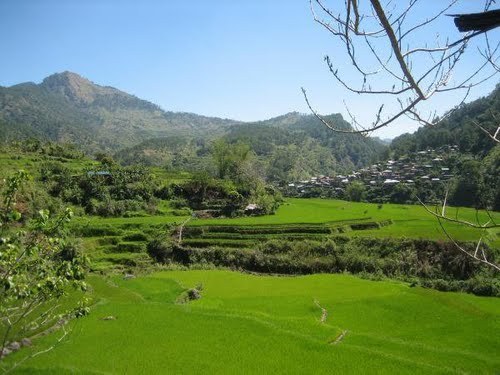
The early morning was murky in Bauko. Thick fog enveloped Lacuasan's hut atop the knoll. All around, there was an endless sea of mist. In high spirits , Father trodden the dewy grass like a colt prancing in pasture. The sun shone metallic dull and it's faint beams peeped through a thin veil of mist in the eastern horizon. He stared at the sunflowers and carnations scattered in abundance over the slopes of the Bauko mountainsides.
Maila appeared suddenly at the base of the barren hill where the race was to be held. Lacuasan was to draw the starting line. Pulling his pistol from a leather holster tucked in his waist, he advised the competitors to be ready and with the bark of his gun they were to climb the hill as fast as they could.
When the gun barked, Maila darted towards the summit like a frightened deer, her legs appeared like rapid clogs spiking furiously upwards. Meanwhile, Father sped up like a jet hitting fist-sized boulders with lightening ferocity. Father knew he was exhibiting now his prowess in the century race back in his high school years when he romped away with a gold medal in the pre-war national athletic meet in Manila. The Bauko beauty gasped for breath but she was no match for the lowlander, this soldier of fortune who had drifted up to the Bauko highland to hide from Japanese hounds.
"I surrender to you, Andy," Maila calmly admitted, breathing hard. "I didn't know you were a sprinter for the first caliber." She knelt down to catch her breath.
"And so?"
"Of course, the jog is up and I am now yours," was the curt reply. That was how Father won the the heart of Maila. Gasping for breath, Father walked slowly towards her. Clutching her by the shoulders, he gazed into her eyes. They held hands as they ascended a promontory. At the summit stood a solitary pine tree casting it's shade over a clean boulder. Here they sat together.
The sun now shone clearly and resplendent. The flowers around them bid a joyous celebration. Lacuasan followed them and congratulated both victor and vanquished and to Father for winning the heart of the fastest girl in Bauko.
IN EARLY DECEMBER, a runner from Volckmann's headquarters up in Kapangan visited the two guerrilleros. He handed Father a field order instructing them to report to headquarters for further duty as the forces of General MacArthur were fast approaching the beaches at Lingayen. In January, the liberation forces tangled with the Japanese army everywhere in Luzon. The Allied Forces surrounded the enemy in the mountain provinces by placing the infantry divisions to route Yamashita's forces holed up in Kiangan. Father and Lacuasan returned to their respective outfits to join the bloody encounters with Japanese soldiers in Bessang, Lepanto, and Kayan, the last being but a stone's throw from Bauko. In late August, the Americans issues an ultimatum to Yamashita's forces to surrender. That after the bombing of Hiroshima and Nagasaki where thousands of Japanese were killed by atomic bombs. Yamashita had to surrender unconditionally.
The GIs boarded the jeep with Lacuasan at the wheel. Father waved at the Bauko beauties as the jeep moved away. Maila and the others waved back. He caught Maila's eyes supplicating. She had not stopped crying since their hands parted in a muted farewell. Looking back once more, he thought he saw Maila's lips, parted, imploring him to return. But the jeep made a sharp turn at the fork in the road and they were met by a strong wind from the vegetable fields lining the road, accentuating the fact that the poblacion was already behind them.
With the surrender of the wily Tiger of Malaysia and his forces, after the last prisoners of war were settled in camps in the lowlands, Father and Lakuasan hurriedly left for Bauko for a brief respite. Maila and her friends arranged a homecoming celebration for the two soldiers. That night the moon was big and round and the cool Bauko air hovered over the schoolhouse where the lively event was to be held.
On a clear Sunday morning, after the sun had dissipated the thick fog enveloping the Bauko skyline, Maila and her friends stood in front of the schoolhouse to bid Father and Lacuasan goodbye. The two GIs had a new assignment somewhere in La Union.
"Of course, I shall return," Father calmly told Maila, clutching her cold hands tightly. His lips quivered and Maila, shaking with grief, placed a lei of fresh everlasting flowers over Father's neck. She was sobbing so hard as Father consoled hee by lightly patting her back.
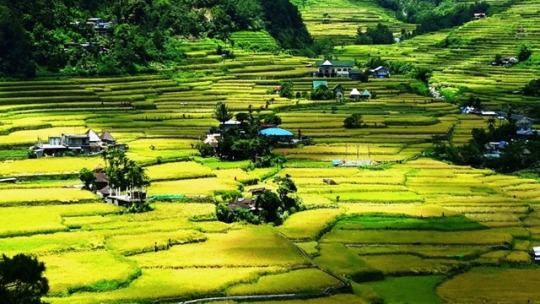
This short story is authored by Yolanda V. Ablang taken from Ilocano Harvest (a collection of short stories in English by Ilocano Authors). Edited by Pelagio Alcantara and Miguel S. Diaz. Published by New Day Publishing, 1988, in Quezon City.
Photos are not mine, but taken from the Internet, including australianmuseum.net.au
Additional editing done by myself.
#philippines#ilocano#literature#womenwriters#heritage#mountains#lovestory#country#20th century#filipino#filipina#baguio
1 note
·
View note